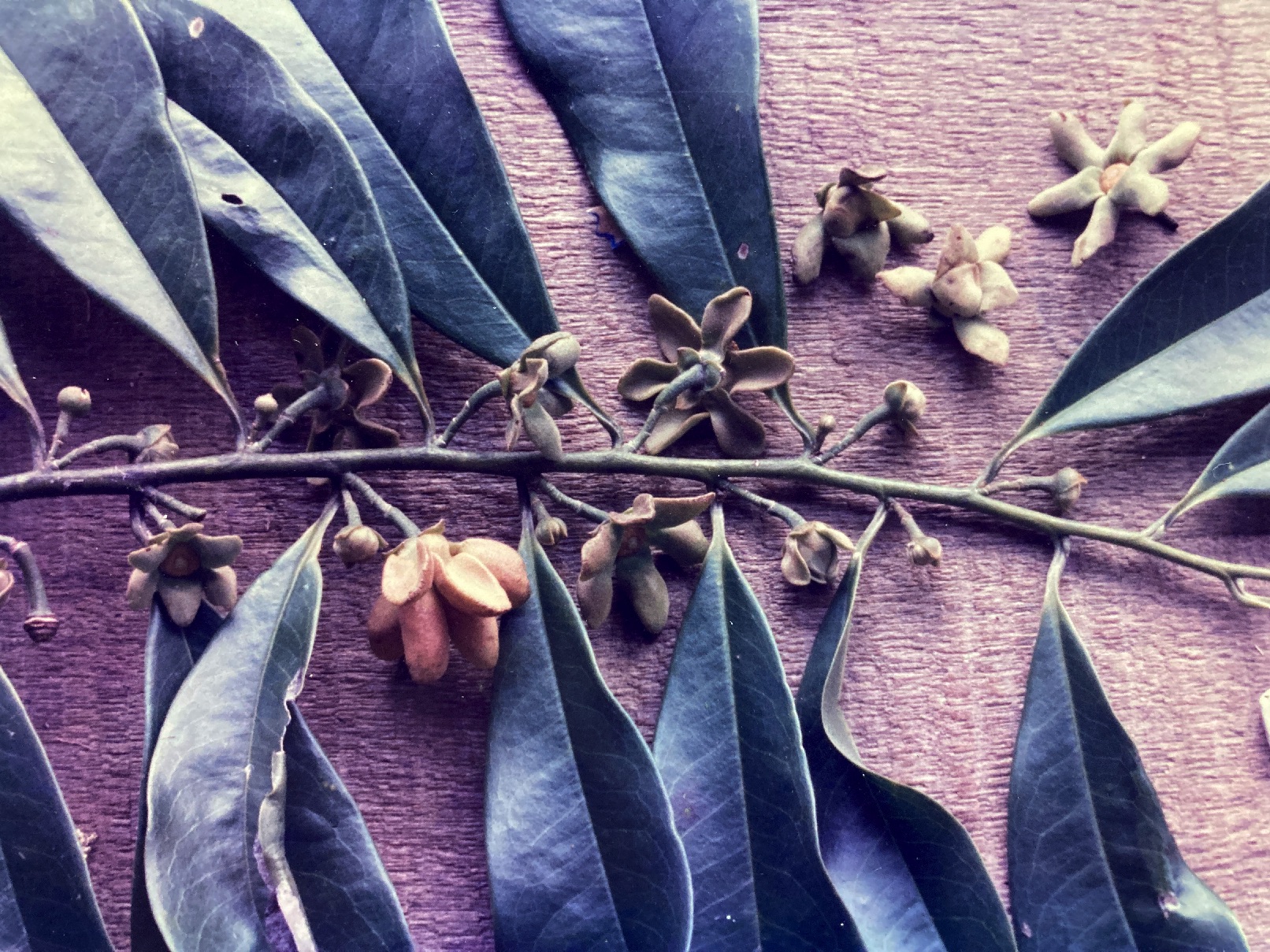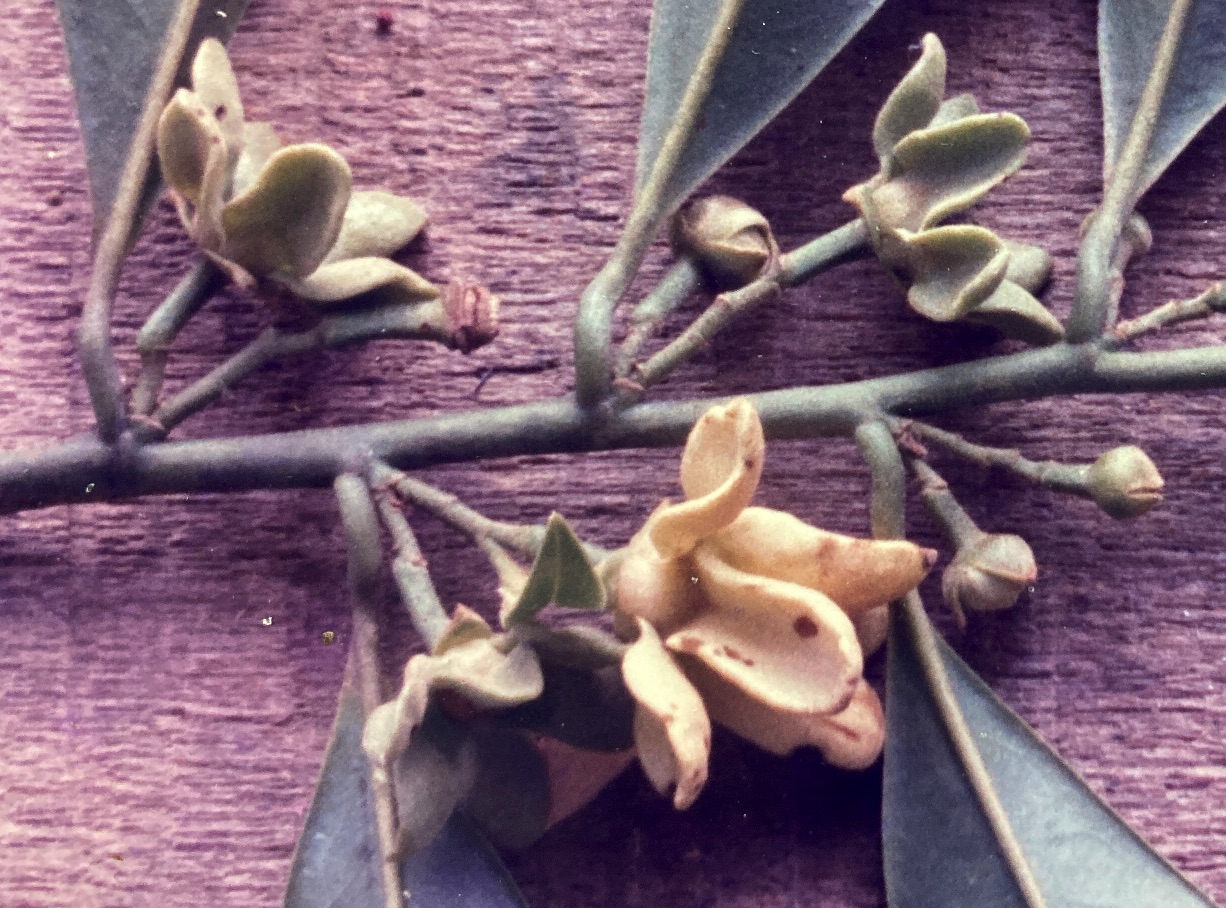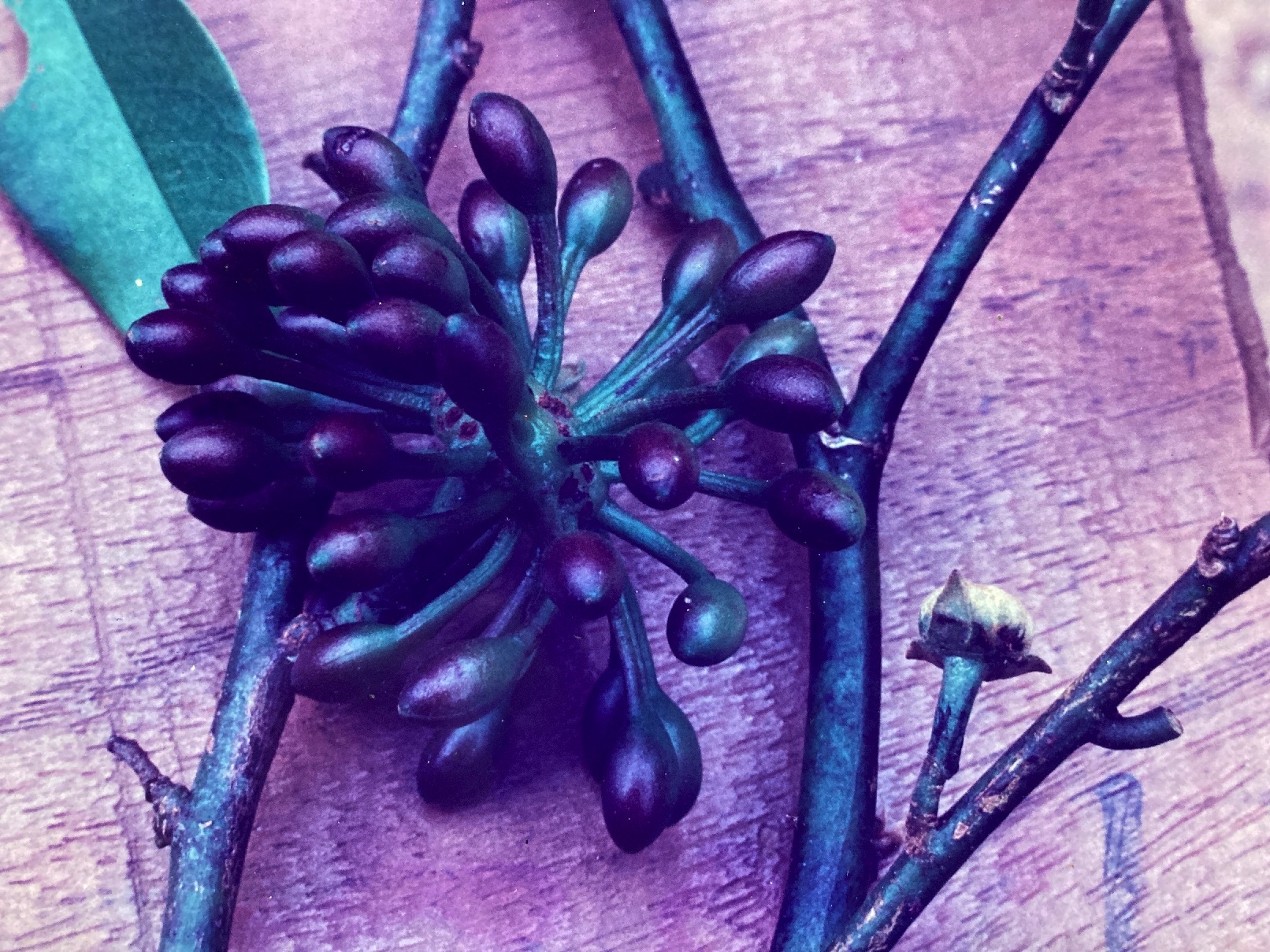Guatteria sp.
Annonaceae
Tree: Occasional, evergreen, sub-canopy to canopy tree (25-30 m) found in equal abundance amid the thick vegetation of humid bottomlands as well as along well-drained slopes and ridges. Failing to form stands, individuals are thinly and widely scattered throughout the forest. Though a tall tree, Guatteria is not robust and it generally lacks much branching or crown foliation. Still, its nearly omnipresent flowers and fruits are intriguing for their color and shape. Due to the large number of similar species within the Annonaceae, and the lack of study that this family as a whole has received, this species of Guatteria remains unidentified at this time (2004).
Description: Guatteria has a very straight, monopodial trunk (35 cm) and it is usually cylindrical and columnar – this latter effect being accentuated by the thin, smooth, and gray-white bark that covers it. The tree shows no branching except at the very top – perhaps only along the final sixth of the bole. There, the limbs are thin, long, and horizontally positioned; drooping at their extremes thanks to the weight of the foliage. The crown they form is relatively small, narrow, and pyramidal in shape. Guatteria‘s dark green leaves (16 by 4.5 cm) are simple, alternate, and leathery; arranged in two tiers along either side of the zigzag twigs. Elliptical to oblanceolate in shape, the blades possess slowly tapering, cuneate bases ending in 1 cm petioles and well developed drip-tips of equal length. New foliage is added to the crowns in May and June.
Flowers are produced from the leaf axils, singly or in pairs, and when open they are yellow (3 cm) and only slightly aromatic. Each is composed of six thick, stiff, velvety petals that surround a daisy-like central disk, itself covered with minute stamens. There appears to be no definite flowering season for this species, with different individual trees coming into – and going out of – flower at all times during the year. Fruits are globular heads (6 cm) of small club-shaped berries – typical in form to those of many members of this family. Each of the thirty or so berries has a 2 cm green stalk that attaches it to the swollen central hub of the fruit – in a spoke-like fashion. The berry itself is maroon and contains one, flesh-colored, ovoid seed. Fruits are seen in the canopies all year round.
Similar Species: The two-tiered, dark green foliage of this tree – coupled with its pyramidal crown – produces an unmistakable and relatively unique pattern. Fruta Dorada (Virola sp.) has similar elongate leaves arranged in two tiers, as well as a monopodial trunk, but its leaves are much larger and they lack the glossy sheen of Guatteria‘s. Yayo (Xylopia frutescens) also possesses these crown and leaf features, however its foliage is significantly smaller and lighter in color. Glossy, pale-green bark further makes this latter species distinctive.
More to the point, Guatteria is fertile nearly all the time, and the presence of flowers and fruits in its canopy (and on the ground) always allows for positive identification.
Natural History: Beetles are probably the main pollinators of Guatteria flowers, while trogons (Stiles & Skutch, 1989), bats, squirrels, and monkeys are said to disperse its fruits (Mabberley, 1978).
Many aborted blossoms, with one or two petals bent and fused to their centers, can be found on the ground underneath flowering trees. Appearing partially unopened, it seems that a grub-like larva enters the bud and parasitizes it – keeping the flower from fully developing and causing it to be aborted. Mabberley notes that the flowers in many Annonaceae species act as traps for pollinating beetles – providing a possible, alternative explanation for this observation. Croat (1978) contributes that most Annonaceae flowers lack nectar, and are thus predisposed to pollenation by pollen-feeding insects – like beetles.
Distribution: In Costa Rica, Guatteria is known from Manuel Antonio National Park and Punta Leona. Due to the lingering uncertainty as to its specific identity, Guatteria‘s range cannot be cited.



